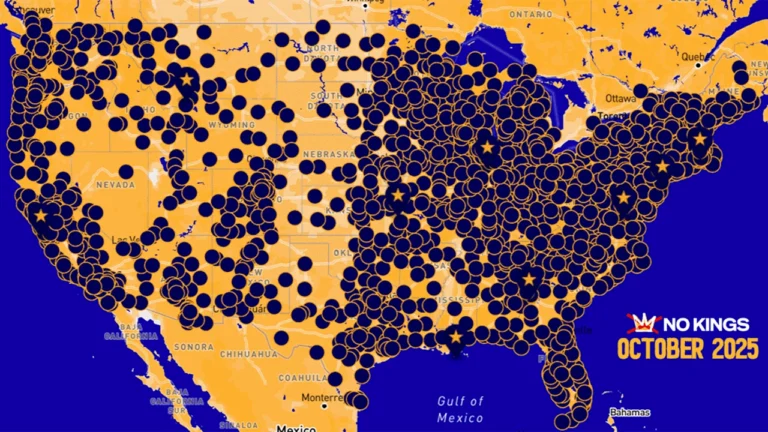
We’ve all heard it: For decades, it’s been a crux of career advice. Keep every door open. Stay on good terms. Never fully walk away. Don’t burn that bridge.
But that advice was followed during a different time and for workplaces that were designed to keep you in line, not further your career. In today’s fast-moving workforce, clinging to outdated relationships, toxic workplaces, or unfair structures isn’t loyalty. It’s self-sabotaging.
It’s time to rethink what was once considered the norm. Sometimes burning a bridge isn’t reckless. It’s strategic. It’s the first step toward building something better in your career.
Why “Don’t Burn Bridges” No Longer Works
The original phrase came from the military: destroy the bridge behind you so you can’t retreat. In modern work life, it’s been turned into “never cut ties,” even if those ties are choking your growth.
The reason for this advice? To protect the system, not you. To make sure you don’t disrupt the corporate hierarchy, question what was once considered normal, or hold higher powers accountable.
But when you’re trauma-bonded to bad bosses, toxic workplaces and colleagues, or exploitative industries, staying connected keeps you stuck. It prevents advancement. It robs you of the energy you need to move forward.
Let’s be clear: walking away is complicated.
Here are five ways to burn bridges and do it in a way that’s bold, healthy, and future-career focused:
1. Walk away, with both feet. If you’re constantly keeping one foot in the past and one in the present, you’ll never fully be able to march toward your future. When you make the decision to break free from a place or a person holding you back, you must commit to the ending. Any ambivalence will send mixed messages to what you no longer want in your life and to yourself.
Stop meeting your former toxic boss for coffee. Don’t “like” and comment on posts by the person who mistreated you. Block the number in your phone that sends a shiver down your spine every time you see it pop up. Cut the cord.
2. Stand for your boundaries. Create, communicate, and comply with the boundaries that you need and require that those who you allow in your life do the same. Writer, broadcaster, and podcaster Emma Gannon is known for saying, “The only people who get upset when you start setting boundaries are the ones who benefited from you not having them.” You will be met with resistance because you are no longer allowing others to mistreat you. Don’t take that pushback as a sign to retreat. It’s working. This is what it looks like.
Decide where you will spend your time and energy and who with. Is the monthly networking dinner you signed up for still serving you? What about the subscription to the organization that no longer feels aligned? It’s time to stop feeding the people and places that no longer support the life you’re designing. Cancel what’s not adding value.
3. Protect yourself. Who is the version inside of you who wasn’t—or isn’t—safe? Now, go to them and tell them that you know a way out. Lead them there, hand in hand, and don’t stop until you get to the other side. So much of growth is about knowing better and then, doing better. You now have the power to rewrite your story. Make sure you’re the main character in this edition.
Do you remember what it felt like to be in the midst of your career chaos? It’s time to hold that emotion again and release it. Write a letter to that version of yourself acknowledging, honoring, and validating the experience. Tell them what you’re doing differently now so that it will never happen again. So much of healing and moving forward is dependent upon witnessing what was. And getting those feelings out of your body onto paper is a powerful tool in the process.
4. Build your own bridge. We spend a lot of time running to the next thing. Preparing for the next challenge. Rushing to achieve the next milestone. It’s a perfect recipe for never enjoying anything you’ve worked for. Stop. Look around. This was your goal at one point in time. And even if it’s not exactly the way you want it to be, you have achieved so much. Stand at the peak of your in-between. Look to the left at where—and who—you’ve been. Look to the right at where you’re going, at who you’re meant to be. Thank them, the you of this moment. They deserve to be celebrated.
Share what you’re doing with people you trust. Yes, they can hold you accountable, but they will also be there to celebrate these important steps you’re taking: burning the bridges to a past that no longer serves you; building a bridge to a future that is ready to fulfill you. You can’t do it alone. Surround yourself with the people who want to see you win.
5. Walk to the other side. Your new bridge is built. The decaying and diseased bridges are burned. All the planning and strategizing and vision boarding in the world means nothing unless you take action. Rewiring the conditioning inside of you that tells you “don’t burn bridges” takes effort, determination, and commitment. But the act of making a different choice—of reprogramming an operating system that at one point brought you safety, success, and solace—takes conviction. You must commit to this shift and start changing your daily habits if you want to realize this new life for yourself. No one else will do it for you. It is up to you.
This is our way forward: New system. New rules. New path.
Let’s stop asking others for directions to places they’ve never been. Let’s stop taking directions from others to places they’ll never go. Let’s build our own bridges. On our own terms.
I’ve gone back too many times—to people and places in my career that have burned me; I’ve put my hand into the fire again and again thinking that maybe, this time, it won’t be so hot. I’ve slipped back while climbing my way out of quicksand because giving in felt so much easier. I even taught myself that it actually felt good.
When we always keep one foot behind, wedged inside this mythical “door” that must remain open indefinitely, we never fully move forward.
It’s time. Close the door. Walk away. Burn the bridge. Build a new bridge. Cross it.
“Burning bridges” isn’t self-destructive. It’s an act of self-preservation. And you will always be worth saving.






